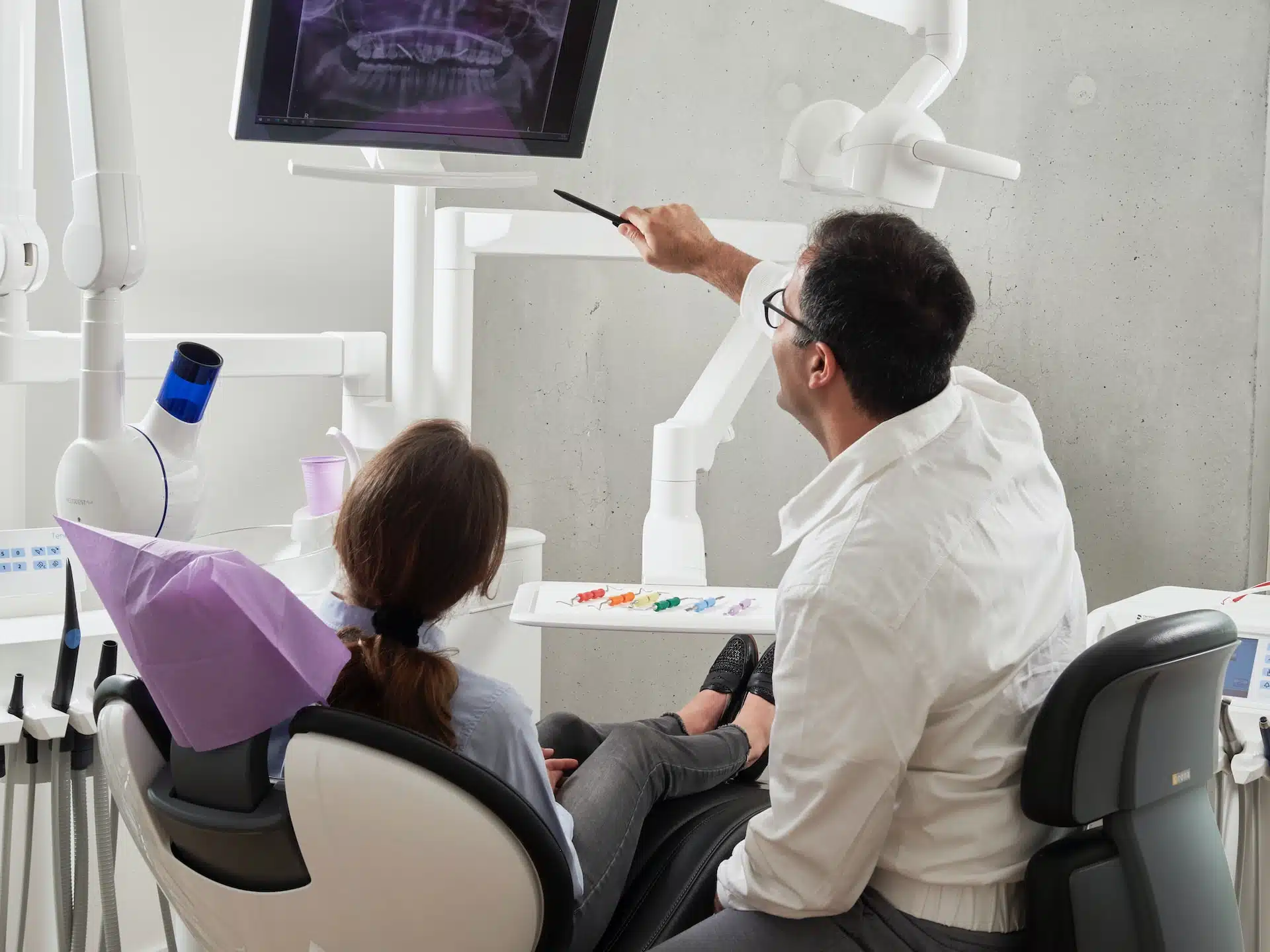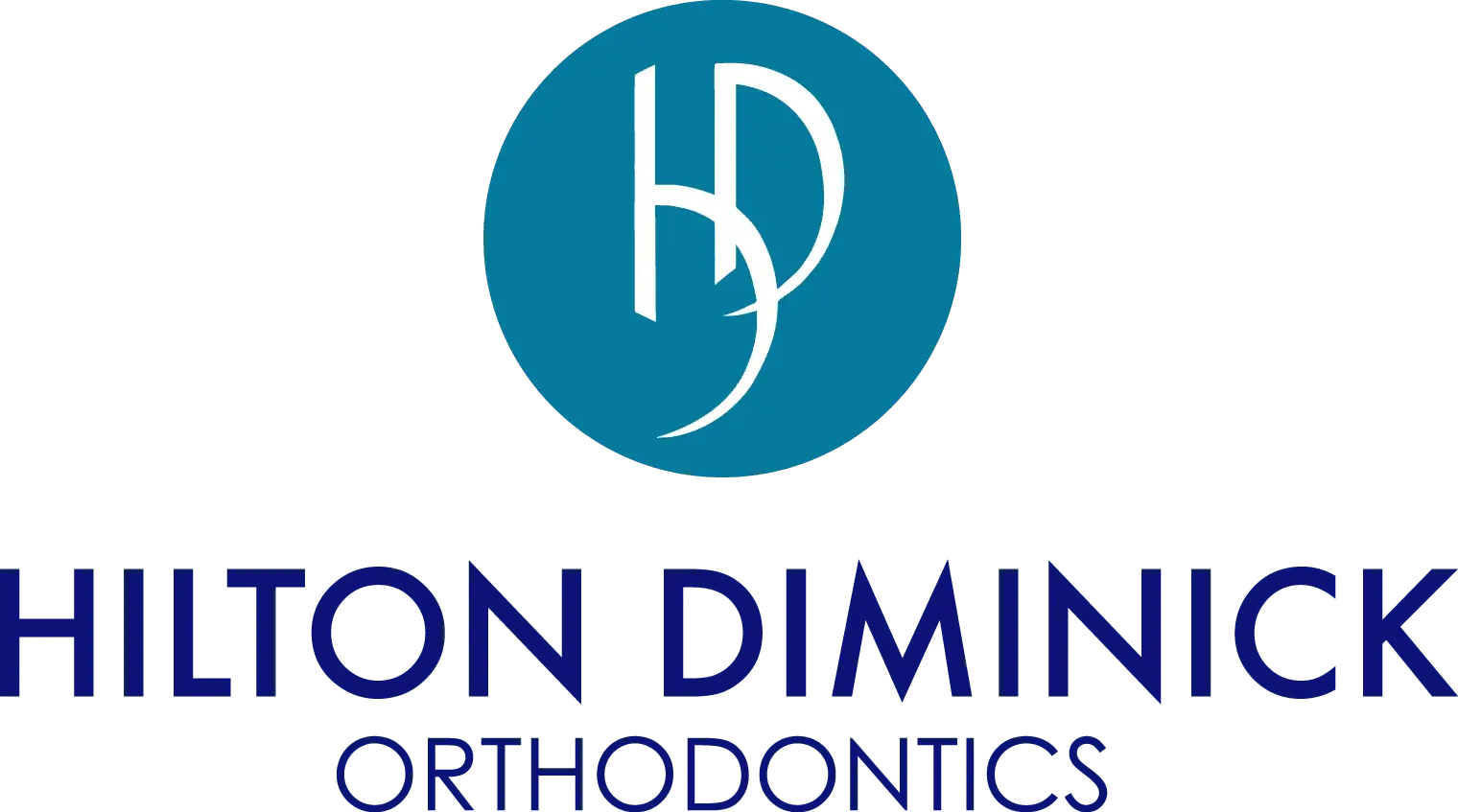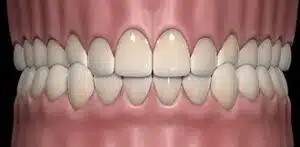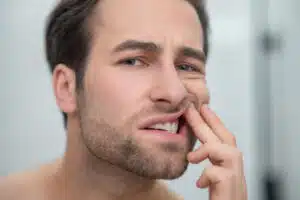
In the realm of dental concerns, crossbite is a condition that can significantly impact oral health and overall well-being. It occurs when the upper teeth do not properly align with the lower teeth, resulting in a misaligned bite. Without crossbite treatment, this misalignment can affect both the front and back teeth, leading to various complications.
Essentially, a crossbite can be described as a dental irregularity where the upper teeth sit behind the lower teeth when the jaw is closed (posterior crossbite) or when specific teeth in the upper jaw are positioned inwardly compared to the corresponding teeth in the lower jaw (anterior crossbite). If you or someone you know is dealing with this condition, it’s crucial to gain a comprehensive understanding of it, its potential effects, and available crossbite treatment choices. For expert guidance and personalized treatment options, it’s advisable to consult with an experienced orthodontist in Harrisburg.
Types of Crossbite
A. Anterior Crossbite
Anterior crossbite refers to a condition where the upper front teeth are positioned behind the lower front teeth when the jaw is closed. This misalignment can occur due to a discrepancy in the size and position of the upper and lower jaws, or it may result from individual tooth misalignments. Anterior crossbite can affect one or more front teeth and can have aesthetic implications, affecting the symmetry and appearance of the smile. It can also lead to difficulties in biting, chewing, and proper speech pronunciation.
B. Posterior Crossbite
Posterior crossbite involves the misalignment of the back teeth, both in the upper and lower jaws. In this case, the upper teeth are positioned inside the lower teeth when the jaw is closed. This misalignment can occur on one side of the mouth (unilateral) or on both sides (bilateral). Posterior crossbite can result from narrow dental arches, skeletal discrepancies, or a combination of both. It can cause uneven wear on the teeth, jaw discomfort, and an increased risk of temporomandibular joint (TMJ) problems.
C. Unilateral Crossbite
Unilateral crossbite occurs when there is a misalignment on one side of the mouth, either in the front or back teeth. It can affect the upper or lower jaw, causing the teeth on one side to sit inside or outside their normal position when the jaw is closed. Unilateral crossbite can lead to asymmetrical jaw growth, facial asymmetry, and functional issues such as difficulty biting and chewing on the affected side. If left untreated, it can potentially impact the development of the jaws and lead to long-term complications.
D. Bilateral Crossbite
Bilateral crossbite involves the misalignment of the teeth on both sides of the mouth. It can occur in the front teeth (anterior bilateral crossbite) or the back teeth (posterior bilateral crossbite). Bilateral crossbite can result from a narrow upper jaw, a wide lower jaw, or a combination of both. This condition can affect the bite, jaw alignment, and facial aesthetics. It may cause problems with proper dental function, such as chewing and biting efficiency, and can lead to tooth wear and strain on the jaw joints.
Causes of Crossbite
A. Genetic Factors
Genetic factors play a significant role in the development of crossbite. Inherited traits can affect the size and shape of the jaws, as well as the positioning of the teeth. If a family member has a crossbite, there is a higher likelihood of other family members developing the condition. Genetic factors can contribute to dental discrepancies, such as a narrow upper jaw or a mismatch between the upper and lower jaws, leading to crossbite formation.
B. Dental Crowding
Dental crowding occurs when there is insufficient space in the mouth to accommodate all the teeth properly. This can result in teeth being pushed or rotated out of their ideal positions, leading to crossbite. Crowding can be caused by various factors, including a discrepancy in jaw size, delayed eruption of permanent teeth, early loss of primary teeth, or improper tooth alignment. Crowded teeth can create an imbalance in the bite, increasing the likelihood of crossbite formation.
C. Habits (e.g., Thumb-sucking, Tongue-Thrusting)
Certain habits, especially during childhood, can contribute to the development of crossbite. Thumb-sucking, prolonged pacifier use, or tongue-thrusting (pushing the tongue against the front teeth while swallowing) can exert pressure on the teeth and jaws, altering their alignment over time. These habits can disrupt the natural growth and development of the jaws, leading to crossbite formation.
D. Jaw Misalignment
Misalignment of the jaws, known as skeletal or jaw discrepancies, can contribute to crossbite. If the upper and lower jaws do not align correctly, the teeth may not meet properly when the jaw is closed, resulting in crossbite. Jaw misalignment can be caused by factors such as genetics, developmental abnormalities, trauma, or improper growth patterns. It is important to address jaw misalignment to achieve a stable and functional bite.
Effects of Crossbite
A. Dental Complications
Crossbite can lead to dental complications that affect the overall health of the teeth and gums. The misalignment of teeth can cause uneven wear patterns, enamel damage, and an increased risk of tooth decay and gum disease. It can also result in improper force distribution during biting and chewing, putting excessive stress on certain teeth, which may lead to tooth fractures or sensitivity.
B. Temporomandibular Joint (TMJ) Issues
Crossbite can contribute to temporomandibular joint (TMJ) issues. The TMJ is responsible for the smooth movement of the jaw, allowing for comfortable jaw opening and closing. When the bite is misaligned due to crossbite, it can disrupt the proper functioning of the TMJ, leading to jaw pain, clicking or popping sounds, jaw stiffness, and difficulty in opening or closing the mouth.
C. Speech Difficulties
The misalignment of teeth caused by crossbite can also affect speech. The positioning of the teeth plays a crucial role in forming certain sounds and pronunciations. Crossbite can interfere with the normal movement of the tongue and affect the ability to articulate certain sounds correctly, resulting in speech difficulties or a lisp.
D. Facial Asymmetry
Untreated crossbite can contribute to facial asymmetry, particularly in cases of severe or long-standing crossbite. The imbalance in the position of the jaws and teeth can affect the overall facial appearance, causing asymmetry in the jawline, chin, and smile. Without crossbite treatment, facial asymmetry can impact an individual’s self-esteem and confidence.
Crossbite Treatment
A. Orthodontic Crossbite Treatment
Orthodontic treatment is a common approach to correct crossbite. It focuses on realigning the teeth and jaws to achieve a harmonious bite and proper dental alignment. Several orthodontic appliances and techniques can be utilized, including:
Braces: Traditional braces consist of brackets bonded to the teeth and connected by arch wires. By applying gentle and controlled forces, braces gradually move the teeth into their correct positions, effectively correcting crossbite.
Invisalign: Invisalign offers a discreet alternative to traditional braces. It utilizes a series of clear, removable aligners that are custom-made to gradually shift the teeth. Invisalign aligners are virtually invisible and can be easily removed for eating, brushing, and flossing. With Invisalign Harrisburg, patients can achieve a straighter smile discreetly and comfortably without the visibility and potential discomfort associated with traditional braces.
Palatal Expanders: Palatal expanders are devices used to widen the upper jaw in cases of posterior crossbite or narrow dental arches. By applying gentle pressure, they gradually expand the palate, creating more space for proper tooth alignment and eliminating crossbite.
B. Orthognathic Surgery
In some cases of severe skeletal crossbite or jaw misalignment, orthognathic surgery may be recommended. Orthognathic surgery involves repositioning the jaws to achieve proper alignment and balance. This procedure is often performed in conjunction with orthodontic crossbite treatment. Surgical correction of the jaws can address underlying skeletal issues contributing to crossbite and improve both the function and aesthetics of the face.
C. Interdisciplinary Approach (Orthodontics and Oral Surgery)
For complex cases of crossbite, an interdisciplinary approach involving both orthodontics and oral surgery may be necessary. This collaborative crossbite treatment plan combines the expertise of orthodontists and oral surgeons to address skeletal discrepancies and dental alignment issues comprehensively. By integrating orthodontic tooth movement with surgical repositioning of the jaws, an optimal functional and aesthetic outcome can be achieved.
D. Retainers and Post-Treatment Maintenance
Following the completion of active crossbite treatment, the use of retainers is crucial to maintain the corrected alignment of the teeth. Retainers help prevent relapse and ensure long-term stability. Depending on the individual case, retainers may be removable or fixed (bonded) behind the teeth. It is important to follow the orthodontist’s instructions regarding retainer wear and attend regular check-ups to monitor the results and make any necessary adjustments.
Post-treatment maintenance also includes regular visits to the dentist and proper oral hygiene practices. Maintaining good oral health through brushing, flossing, and regular dental check-ups is essential for the longevity of the crossbite treatment outcomes and overall oral well-being.
Ready to Say Goodbye to Crossbite? Contact Hilton-Diminick Orthodontics in PA Today
Comfort, precision, and efficiency throughout any orthodontic treatment journey are essential. If you are suspecting a crossbite and in need of expert orthodontic care, we invite you to consult the best orthodontist in Camp Hill, Harrisburg, and Carlisle, PA – Hilton-Diminick Orthodontics.
Our orthodontists are proudly board-certified by the American Board of Orthodontics (ABO). We are dedicated to delivering safe and modernized orthodontic care using state-of-the-art technology. With offices in Harrisburg, Camp Hill, and now Carlisle, PA, we strive to establish rewarding and lasting relationships with our patients in a family-friendly atmosphere.
Take the first step towards a healthy and beautiful smile. Contact Hilton-Diminick Orthodontics today to learn more about our comprehensive orthodontic services. We look forward to helping you make the most of your smile now and for years to come.





 Camp Hill, PA
Camp Hill, PA